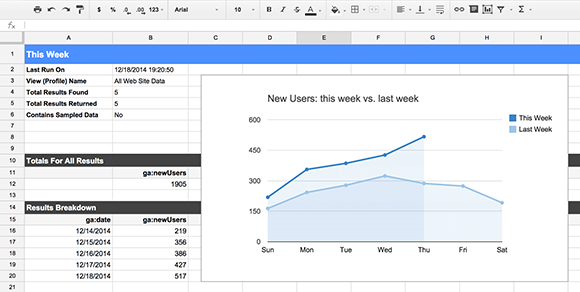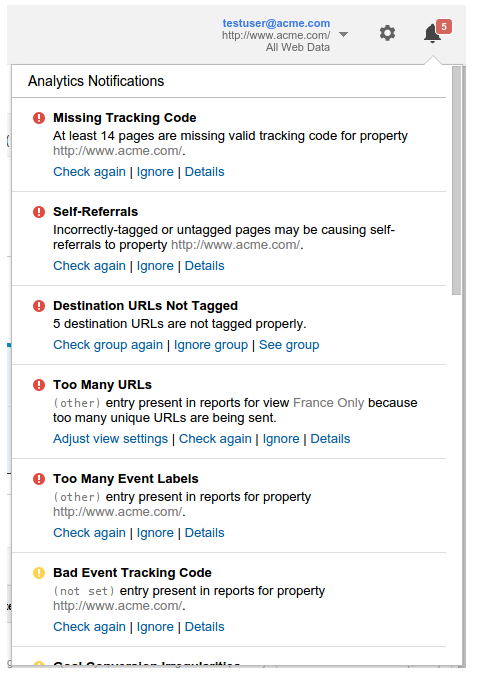We’ve said it before and we’ll say it again: great analytics can only happen with great data.
That's why we've made it a priority to help our users confirm that their data is top-quality. Last year we released our automated data diagnostics feature, and now we’re proud to announce the launch of another powerful new feature: Google Tag Assistant Recordings.
This tool helps you instantly validate your Google Analytics or Google Analytics Premium implementation. If it finds data quality issues, it helps you troubleshoot them and then recheck them on the spot. It’s available as part of the Google Tag Assistant Chrome Extension.
"Tag Assistant Recordings is fast becoming one of my favorite tools for debugging Google Analytics Premium installations! I use it multiple times a day with my Premium clients to help explain odd trends in their data or debug configuration issues. Already I'm building it into my core workflow."
- Dan Rowe, Director of Analytics at Analytics Pros
What can I use it for?
Tag Assistant Recordings works with all kinds of data events: purchases, logins, and so on. What if you sell flowers online and want to confirm that Enhanced Ecommerce is capturing the checkout flow correctly? With Tag Assistant Recordings, you can record yourself going through the checkout process as you buy a dozen red roses, and then review what Google Analytics captured.
If you find that your account isn’t set up properly — if the sale wasn't recorded or was mis-labeled — you can make adjustments and test it all over again instantly. With Tag Assistant Recordings, you know you’re capturing all the data that’s important to you.
Tag Assistant Recordings can be particularly useful when (1) you’re in the process of implementing Google Analytics or Google Analytics Premium, (2) you’ve recently made updates to your site, or (3) you’re making changes to your Google Analytics or Google Analytics Premium configuration. It works even if your new site or your updates aren't visible to the public yet, so you can feel confident before you go live.
Tag Assistant Recordings can also help if you want to reconfigure your Google Analytics account to better reflect your business. For example, you may want to configure multi-channel funnels to detect your AdWords channel. Tag Assistant Recordings lets you set up this new functionality in Google Analytics and test immediately whether everything is working as you expect.
"Tag Assistant Recordings has already been a HUGE help! Analytics Pros and About.com were working on an issue with sessions double-counting and Tag Assistant Recordings let us narrow down precisely which hits were having new sessions counted. It saved us hours of time and helped us jump right to where the problem was. So, in summary, this is awesome!"
- Greg McDonald, Business Intelligence Analyst at About.com
How does it work?
Tag Assistant Recordings works through the Google Tag Assistant Chrome Extension, so you’ll need to download the extension if you aren’t already using it. From there, setup is easy. Simply open Google Tag Assistant, record the user flow you’d like to check, and then view the full report in Tag Assistant. You’ll want to view both tabs in the report (Tag Assistant and Google Analytics) to verify that you see the intended tags. Keep in mind that the Google Analytics data is only available if you have access to the appropriate property or view.
Here's a nifty bonus: If you find a problem, and you think you have fixed it by changing settings from within Google Analytics, return to the Google Analytics tab in Tag Assistant Recordings and click the “Update” button. You'll see instantly how your configuration changes would have affected this recording.
We hope that Google Tag Assistant will be a valuable new tool in your analytics toolkit.
Why not start using it today?
Posted by: Ajay Nainani, Frank Kieviet, and Jocelyn Whittenburg, Google Analytics team
Posted by: Ajay Nainani, Frank Kieviet, and Jocelyn Whittenburg, Google Analytics team











